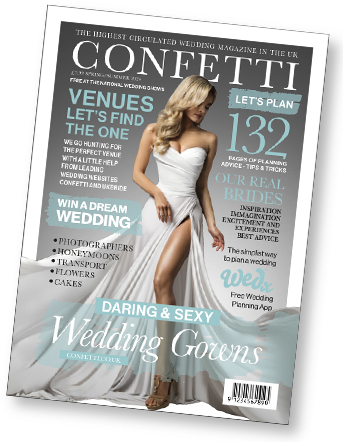The wedding dress train is the elongated portion of material at the back of the bridal gown. It can go with any dress shape or style. …So which type of train is the right one to complement your wedding dress? Here we take you through the most common types of train.
Choosing a bridal train
A train‐‐the elongated portion of material at the back of the bridal gown‐‐can go with any dress shape or style. Trains vary in length from very short to very long, but most brides (royalty excluded) opt for a train no longer than eight feet.
Many brides prefer not to have a train at all, but it is possible to have the best of both worlds by having a detachable train which is usually attached to the dress at the waist via hooks or buttons.
If your train isn’t detachable then it should have hooks that you can use to loop it up to the waist (bustle style) or the shoulder. Some dresses use an old‐fashioned but elegant style where the loop is held over the fingers.
Another type of less common train is a watteau‐‐one that falls from the back near the shoulders to the floor. These are usually detachable, and more popular Stateside than in the UK.
Here we’ll take you through the most common types of train.
Duster/ sweep
The duster is the shortest train available, extending no more than about a foot from where dress hits the floor.
Medium/ chapel
A medium length train is a popular and manageable length, extending from 3½ to 4½ feet from the waist.
Cathedral
This is a long formal train extending 6½ to 7½ feet from the waist. You may need the help of your bridesmaids and/or page boys to hold the train at certain points during the day to avoid damage. (A train any longer than this is generally called a monarch train.)

